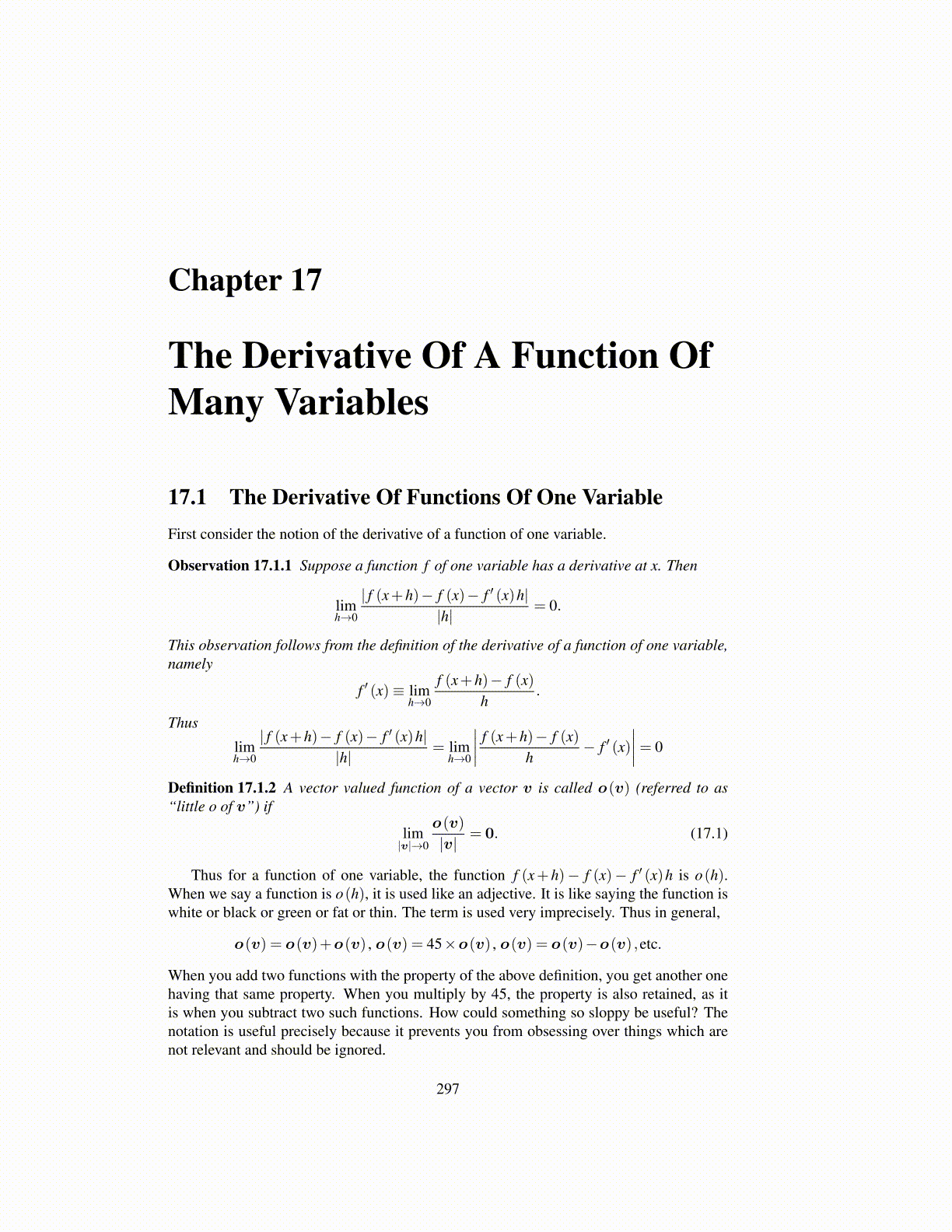
Chapter 17
The Derivative Of A Function OfMany Variables
17.1 The Derivative Of Functions Of One VariableFirst consider the notion of the derivative of a function of one variable.
Observation 17.1.1 Suppose a function f of one variable has a derivative at x. Then
limh→0
| f (x+h)− f (x)− f ′ (x)h||h|
= 0.
This observation follows from the definition of the derivative of a function of one variable,namely
f ′ (x)≡ limh→0
f (x+h)− f (x)h
.
Thus
limh→0
| f (x+h)− f (x)− f ′ (x)h||h|
= limh→0
∣∣∣∣ f (x+h)− f (x)h
− f ′ (x)∣∣∣∣= 0
Definition 17.1.2 A vector valued function of a vector v is called o(v) (referred to as“little o of v”) if
lim|v|→0
o(v)
|v|= 0. (17.1)
Thus for a function of one variable, the function f (x+h)− f (x)− f ′ (x)h is o(h).When we say a function is o(h), it is used like an adjective. It is like saying the function iswhite or black or green or fat or thin. The term is used very imprecisely. Thus in general,
o(v) = o(v)+o(v) , o(v) = 45×o(v) , o(v) = o(v)−o(v) ,etc.
When you add two functions with the property of the above definition, you get another onehaving that same property. When you multiply by 45, the property is also retained, as itis when you subtract two such functions. How could something so sloppy be useful? Thenotation is useful precisely because it prevents you from obsessing over things which arenot relevant and should be ignored.
297